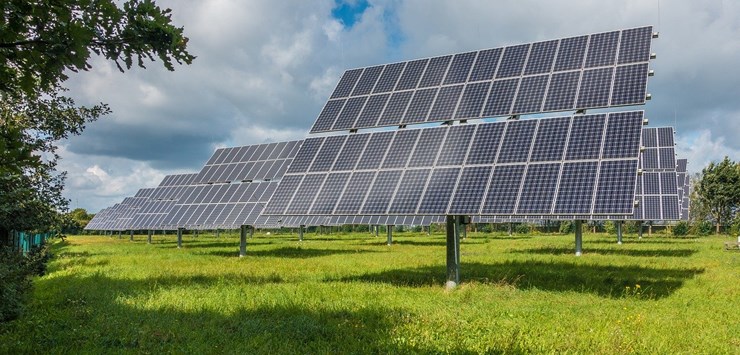Cleve Hill Solar Park, the UK’s biggest solar farm will be built between Faversham and Whitstable, after the government gave the project the go-ahead.
The 900-acre site at Graveney will house almost 900,000 solar panels. It aims to produce power for more than 90,000 homes. Backers of the scheme say cleaner energy is the way forward while others say the countryside will be damaged by the development.
The Secretary of State for Business, Energy and Industrial Strategy (BEIS), Alok Sharma has granted development consent for the UKs largest solar scheme – Cleve Hill Solar Park, located on the north Kent coast one mile from Faversham and less than 60 miles from central London.
Cleve Hill Solar Park Limited (CHSPL), a joint venture between Wirsol Energy Ltd. and Hive Energy Ltd., has developed plans for Cleve Hill Solar Park, which will generate up to 350 MW of clean renewable electricity to power over 91,000 homes, making it the largest solar park in the UK. The project won’t require any Government subsidies and aims to be one of the lowest cost generators of electricity in the UK.
It will also provide over £1 million of revenue to Swale and Kent Councils each year for the lifetime of the project.
The decision comes at an important time with the UK becoming the first major economy to pass law to bring all greenhouse gas emissions to net zero by 2050. Climate emergencies are being declared by local authorities across the country in response to the national and international outcry to see more action to mitigate the impacts of climate change.
The host authority for the project, Swale Borough Council, declared a climate emergency in June, shortly following the same announcement made by Kent County Council.
The Cleve Hill Solar Park is a pioneering scheme which will deliver significant benefits to the low carbon economy and environment. Through its efficient design of orientating panels east west, the solar park will be able to generate more clean power throughout the day, enough to power all of the homes in Swale and Canterbury combined. The solar park also has the potential to store power generated by the sun by way of onsite energy storage, providing power to homes and businesses when it’s needed the most.
Since 2017, the developers have consulted with several stakeholders including the authorities of Swale, Kent and Canterbury and their communities to design the solar park in response to consultation feedback, which has resulted in:
a dedicated landscape and biodiversity management plan which will achieve a 65% increase in biodiversity net gain on site through plans including an open meadow area, likely to be one of the largest areas of meadow in south-east England;
- 56 ha of specially managed habitat being set aside for overwintering birds, which has been designed in consultation with RSPB, Natural England and Kent Wildlife Trust;
- measures to reduce visual impact to neighbouring properties including 4 km of native hedgerow planting to screen the site;
- agreement with the Environment Agency to align with its managed realignment programme to return the site to marshland in the future.
Hugh Brennan of Hive Energy says: “This is a solar park that responds to the need to deliver more clean, renewable energy technology in a way that is smart and sustainable.”
From the start the project team have consulted continuously with local stakeholders and we would like to express our gratitude for the collaborative efforts of the local authorities, stakeholders and the community who have provided their feedback to help shape the design of the solar park. Our work doesn’t stop here, and we will continue our dialogue with these stakeholders to ensure the safe and responsible delivery of the scheme.
The £450 million Cleve Hill Solar Park will create direct and indirect permanent jobs. The developer has produced an ‘Outline Skills, Supply Chain and Employment Plan’ to help secure local economic benefits from the solar park. The project will offer jobs such as site management staff and contract opportunities and will enable a transfer of sector-based knowledge and skills and boost the local supply chain.
The developers will now continue to work with the local authorities, stakeholders and communities to carry out their obligations to consult on and discharge conditions in anticipation of the start of construction, due to commence in Spring 2021. The green energy scheme is planned to be operational by April 2022, delivering a fast response to our urgent climate and clean energy needs.

